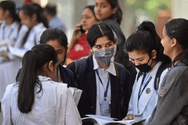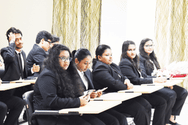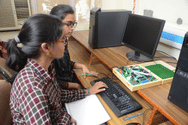
Never Miss an Exam Update
CBSE Class 12th History Chapter 4 - Thinkers, Beliefs, and Buildings Cultural Developments is included in the first theme of the syllabus. The chapter will carry approximately 5 marks in the theory paper. The History syllabus is divided into 3 streams and each stream will carry 25 marks. The theory paper will be conducted for 80 marks. 5 marks will be allotted for the map-based question. In Chapter 4, you will learn about major religious developments in early India, strategies of visual analysis, and their use in reconstructing the theories of religion and reconstructing the Mauryan administration with the help of Arthasastra Indica and other sources. According to the new rules and regulations introduced by CBSE, the question paper will consist of 40% competency-based questions for class 12th.
According to the latest sample papers released by CBSE, the question paper will be divided into 5 sections. These sections will include MCQs, very short answer type questions, short answer type questions, long answer type questions, source-based questions, and map-based questions. No overall choice will be included in the question paper however internal choices will be present in different sections. The duration of the question paper will be three hours and 15 minutes will be provided for the student to read the question paper. You need to understand the instructions printed at the top of the question paper before attempting the questions. Make sure to keep your answer book neat and clean to get the best marks. Always write long answer type answers in pointers rather than paragraphs.
Given below, we have provided the CBSE Class 12th History Chapter 4 - Thinkers, Beliefs and Buildings Cultural Developments Important Questions with Answers. You can actively solve these question papers after completing your syllabus to revise for the exams. Alternatively, after completing these questions, you can also download the latest sample papers available on the official website of the Central Board of Secondary Education for more revision. According to the date sheet released by the Central Board of Secondary Education, the History paper will be conducted on Tuesday, April 1, 2025, from 10:30 AM to 1:30 PM. Try to complete your preparation beforehand to perform your best and get the best score.
Was this article helpful?

































